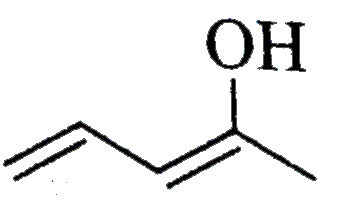Vinyl chloride shows resonance. Draw all of its resonating strucutres.
To draw the resonating structures of vinyl chloride (C2H3Cl), we first need to understand its molecular structure and the concept of resonance.
Step 1: Draw the Lewis Structure of Vinyl Chloride
1. Count the total valence electrons:
- Carbon (C) has 4 valence electrons, and there are 2 carbon atoms: 2 × 4 = 8
- Hydrogen (H) has 1 valence electron, and there are 3 hydrogen atoms: 3 × 1 = 3
- Chlorine (Cl) has 7 valence electrons: 1 × 7 = 7
- Total = 8 + 3 + 7 = 18 valence electrons.
2. Construct the basic structure:
- The structure of vinyl chloride can be represented as CH2=CH-Cl.
- Place the two carbon atoms in the center, with a double bond between them, and attach the chlorine atom to one of the carbon atoms.
Step 2: Identify Possible Resonance Structures
1. Identify the double bond:
- The double bond between the two carbon atoms can participate in resonance.
2. Draw the first resonance structure:
- The original structure is CH2=CH-Cl.
3. Draw the second resonance structure:
- Move the double bond from the first carbon to the second carbon, creating a positive charge on the first carbon and a negative charge on the chlorine.
- The second resonance structure will be: CH3-CH=Cl^(-).
Step 3: Summarize the Resonance Structures
- The two resonance structures for vinyl chloride are:
1. CH2=CH-Cl (the original structure).
2. CH3-CH=Cl^(-) (the resonance structure with a positive charge on the first carbon).
Final Answer
The resonating structures of vinyl chloride are:
1. CH2=CH-Cl
2. CH3-CH=Cl^(-)
1. Count the total valence electrons:
- Carbon (C) has 4 valence electrons, and there are 2 carbon atoms: 2 × 4 = 8
- Hydrogen (H) has 1 valence electron, and there are 3 hydrogen atoms: 3 × 1 = 3
- Chlorine (Cl) has 7 valence electrons: 1 × 7 = 7
- Total = 8 + 3 + 7 = 18 valence electrons.
- The structure of vinyl chloride can be represented as CH2=CH-Cl.
- Place the two carbon atoms in the center, with a double bond between them, and attach the chlorine atom to one of the carbon atoms.
1. Identify the double bond:
- The double bond between the two carbon atoms can participate in resonance.
2. Draw the first resonance structure:
- The original structure is CH2=CH-Cl.
- Move the double bond from the first carbon to the second carbon, creating a positive charge on the first carbon and a negative charge on the chlorine.
- The second resonance structure will be: CH3-CH=Cl^(-).
- The two resonance structures for vinyl chloride are:
1. CH2=CH-Cl (the original structure).
2. CH3-CH=Cl^(-) (the resonance structure with a positive charge on the first carbon).
The resonating structures of vinyl chloride are:
1. CH2=CH-Cl
2. CH3-CH=Cl^(-)
Similar Questions
Knowledge Check
In resonance
AThe energy released by the vibrating body is maximumBEnergy absorbed by the vibrating body is maximumCNeither energy absorbed by the vibrating body nor energy releasedDCan not be predictedVinyl chloride undergoes
Aonly addition reactionsBonly elimination reactionsCsubstitution reactionsDboth (a) and (b)
drawing OF resonating structures
View Solutiondrawing OF resonating structures
View SolutionResonance || Drawing OF Resonating Structures
View SolutionResonance || Drawing OF Resonating Structures
View SolutionResonance || Drawing OF Resonating Structures
View SolutionResonance || Drawing OF Resonating Structures
View Solution


